surgical nerve repair for neuroma
When nerves are injured or damaged they will naturally try to regrow or regenerate, but often don’t do so properly. As a result, a tangled mass of nerve and scar tissue called a neuroma can form, disrupting normal nerve function and potentially causing chronic pain, numbness, burning or tingling. Not all neuromas cause pain, but when they do, it can be incredibly debilitating. Neuromas can form in the middle of your nerve (called a neuroma-in-continuity) or at the end of a nerve, e.g., after an amputation.
how is a neuroma repaired?
If a neuroma is identified as the cause of the pain, your surgeon will first locate and remove the neuroma to get rid of the painful stimulus and stop the pain signals to the brain. Then, depending on your specific nerve damage, your surgeon can repair the nerve by reconnecting it with a nerve graft (autograft or Avance® Nerve Graft) to allow restoration of normal signals to the brain, isolating the nerve end with Axoguard Nerve Cap® to reduce the potential for symptomatic or painful neuroma formation, or in some instances rerouting the nerve.

what causes a neuroma?
A neuroma could occur if a nerve is fully or partially cut during surgery, or stretched as part of a traumatic injury.
A neuroma can also form at the end of a nerve after an amputation. Learn more

could I have nerve damage?
Explore how nerve damage can happen and learn about how different nerves work throughout the body.
Your doctor will provide recommendations, but read on to learn about various repair options for different types of nerve damage.
for cut nerves
direct repair
Nerves must be repaired with no tension on the nerve. If the nerve ends are close together and the tissue is healthy, a surgeon may stitch the ends directly together.

nerve autograft
A nerve from another area of the body is surgically removed and used to bridge the gap in the injured peripheral nerve to guide the healing nerve fibers as they grow. The donor site from the transplant is left with a permanent loss of function. The donor site is selected carefully to minimize the impact.
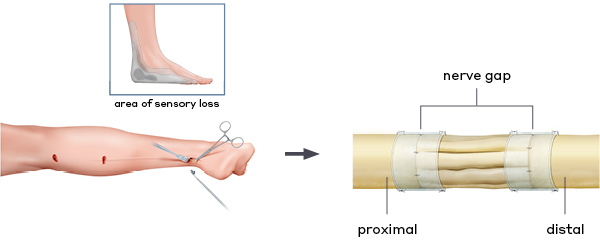
processed nerve allograft
A human peripheral nerve is donated through the tissue donation process. It undergoes rigorous screening, processing to clear and remove cells, and is sterilized before use. Like the nerve autograft, it is used to bridge a gap in a peripheral nerve to guide the healing nerve fibers as they grow.
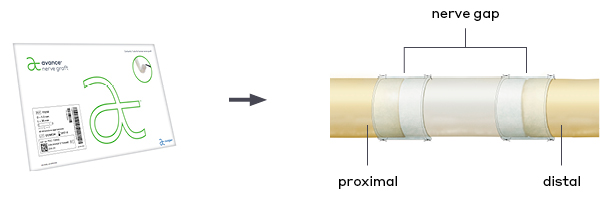
connector-assisted repair®
Connector-assisted repair allows the surgeon to use a small tube to line up the nerve ends when doing a direct, small gap (< 5 mm), allograft or autograft repair.
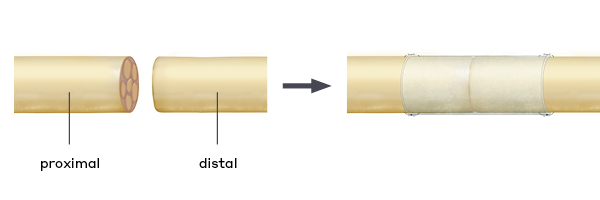
conduit (hollow tube)
A conduit (hollow tube) is made of collagen or synthetic material and may be used to bridge a gap in a peripheral nerve. It doesn’t have an internal structure to guide nerve fibers, and data show it should only be used for very tiny gaps (5 mm and less) between the nerve ends.1
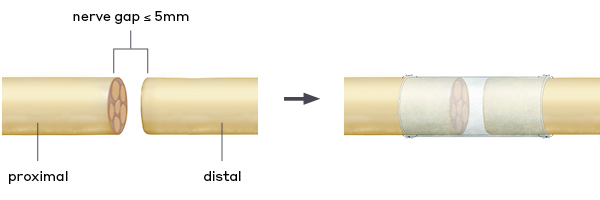
nerve transfer
A surgeon may transfer a functioning nerve to take over an area that has lost function. The transferred nerve delivers signals to the damaged nerve end. However, this means that there is a loss or a reduction of function from the donor site. Gaining function in the transfer area generally outweighs the loss of function from the donor nerve, and is usually done to ensure muscles don’t atrophy.
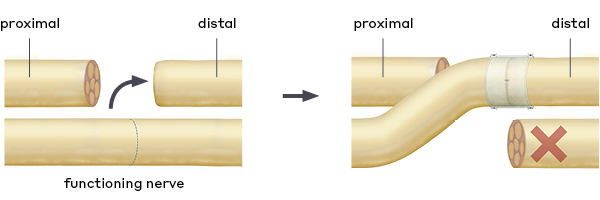
nerve cap
A nerve cap is used to reduce the formation of neuromas and to protect and isolate the nerve end from mechanical stimulation and surrounding tissue. Without the protective surrounding of the nerve cap, the nerve end could still be irritated and send pain signals to the brain.
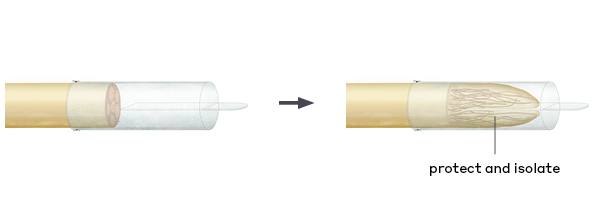
for compressed nerves
nerve wraps
A nerve wrap protects the injured nerve during the healing process, acting as a barrier to protect the nerve from the surrounding tissue.

nerve release
A surgical procedure to relieve pressure on the entrapped nerve by cutting ligament(s) or tissue attachments surrounding the nerve. An example is the procedure to cut the transverse carpal ligament in patients with carpal tunnel syndrome.
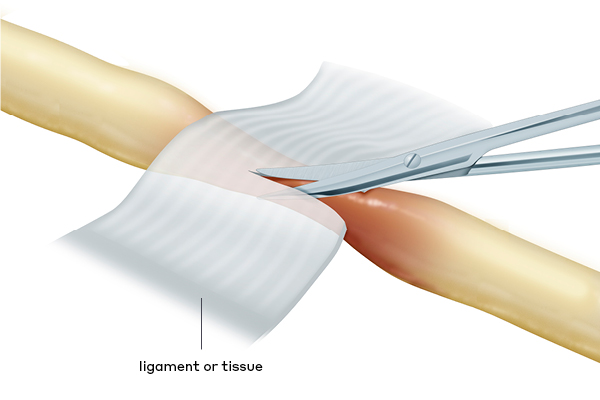
nerve repositioning (transpositioning)
A surgical procedure to slightly reposition the nerve to move it out of the way of an implant or natural anatomic obstruction to prevent it from being compressed. An example is the procedure to move the nerve to a different position in patients with cubital tunnel syndrome.
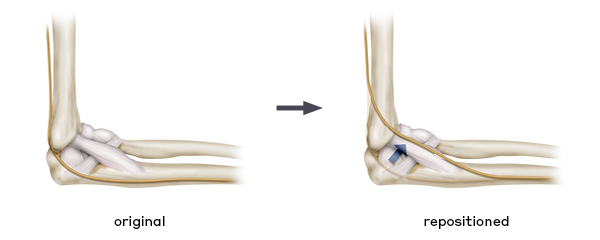
healthy peripheral nerves allow us to

references
- Weber RA, et al. A randomized prospective study of polyglycolic acid conduits for digital nerve reconstruction in humans. Plast Reconstr Surg. Oct 2000;106(5):1036-1048.
